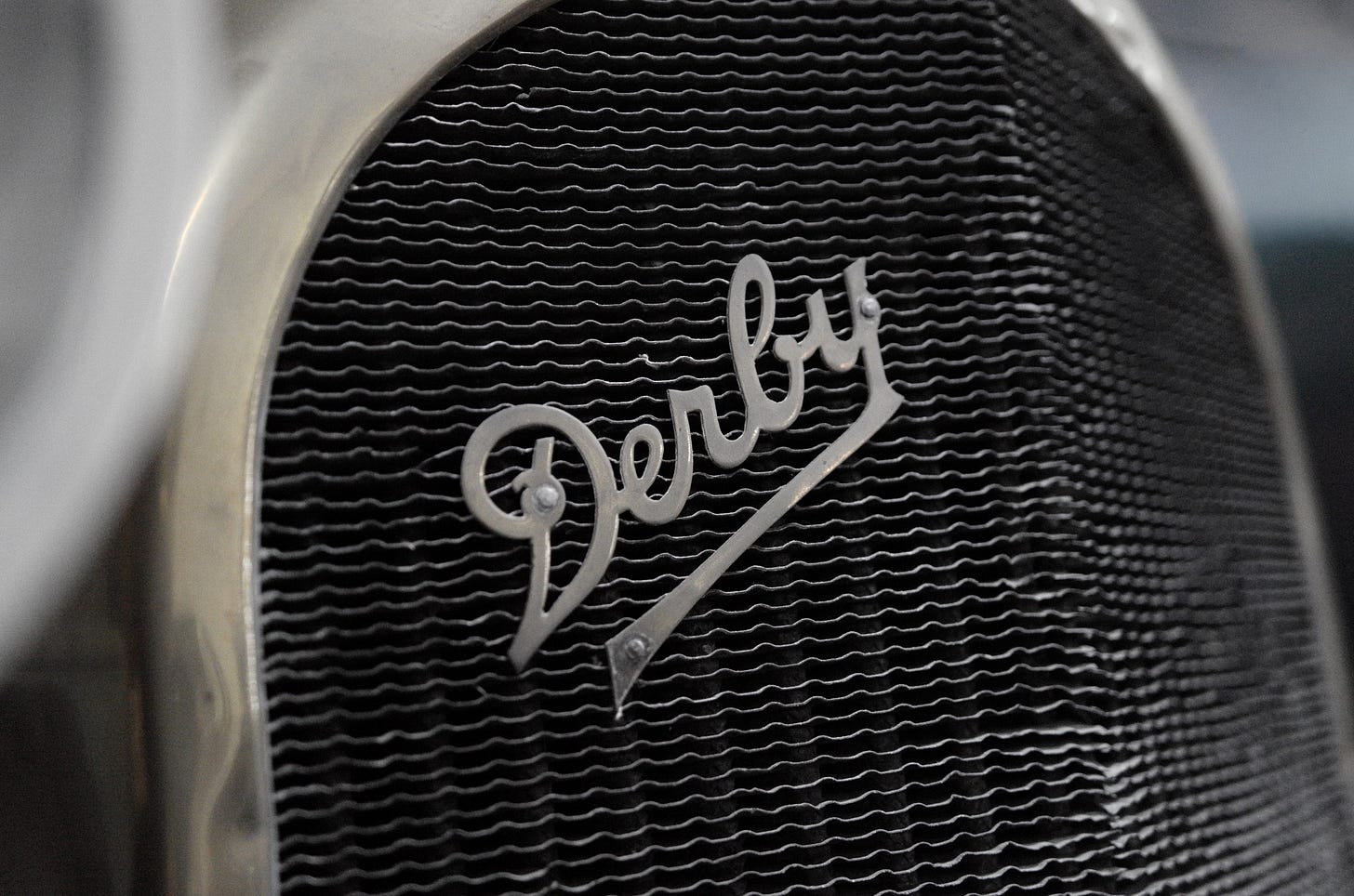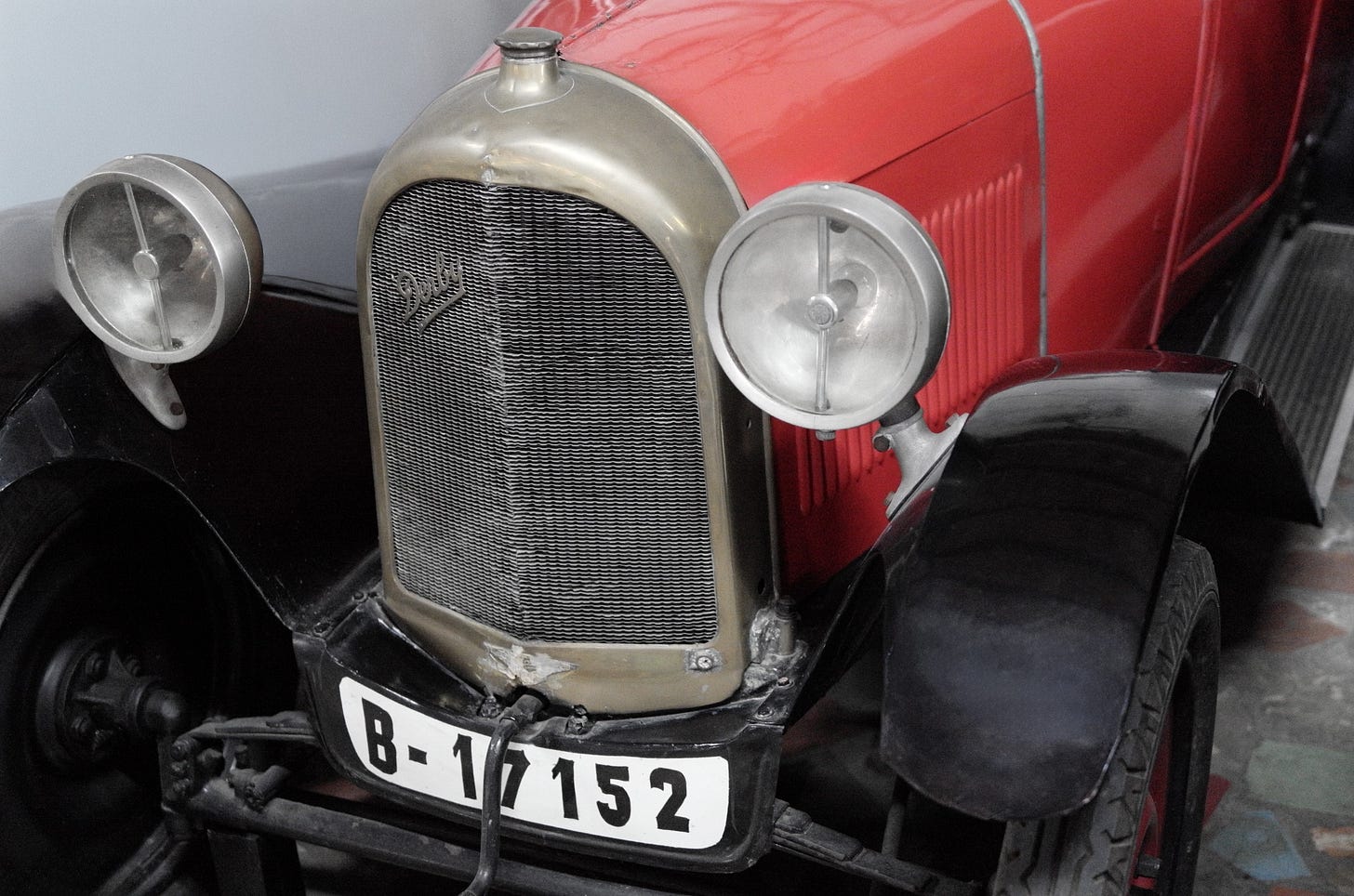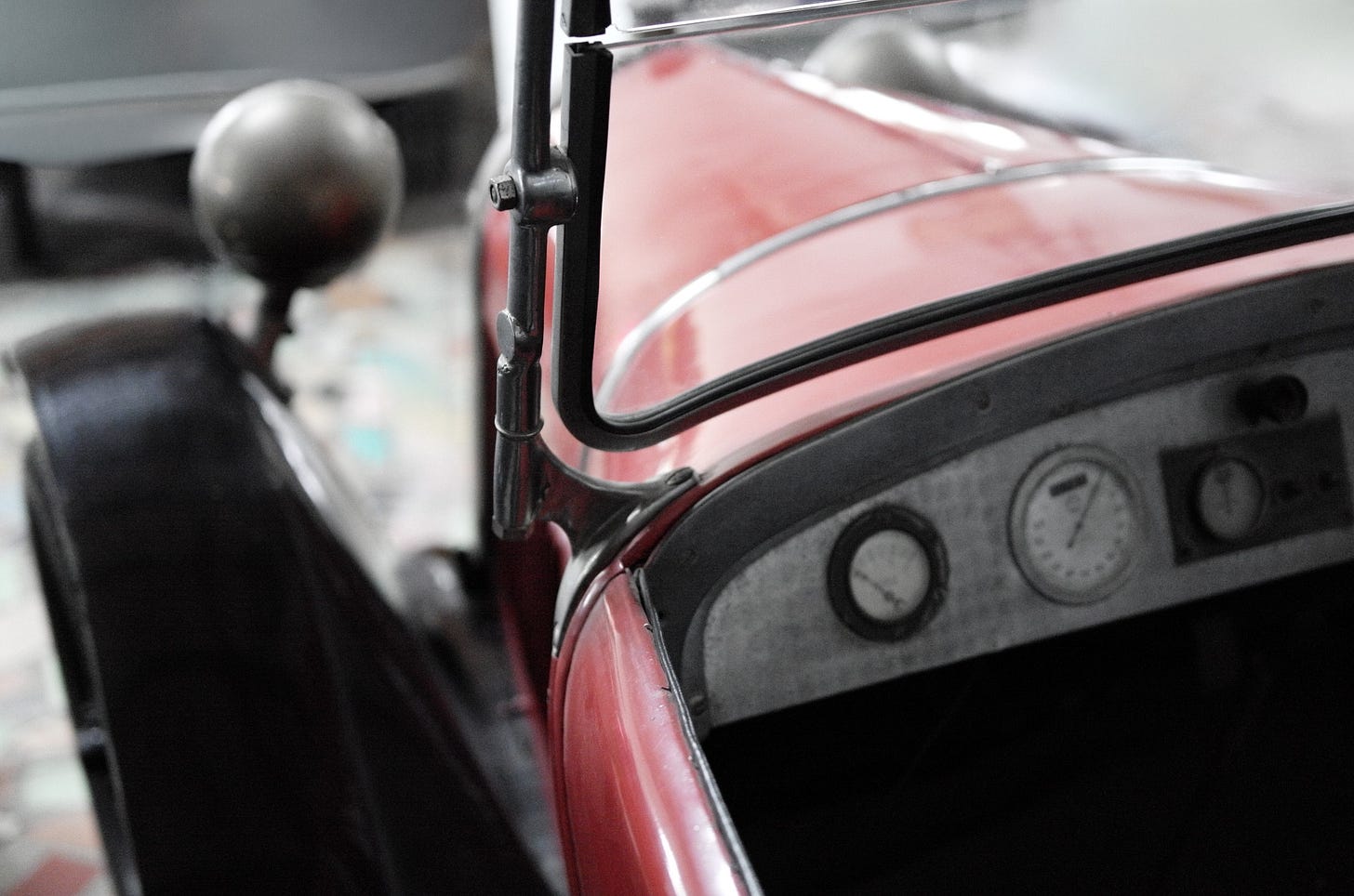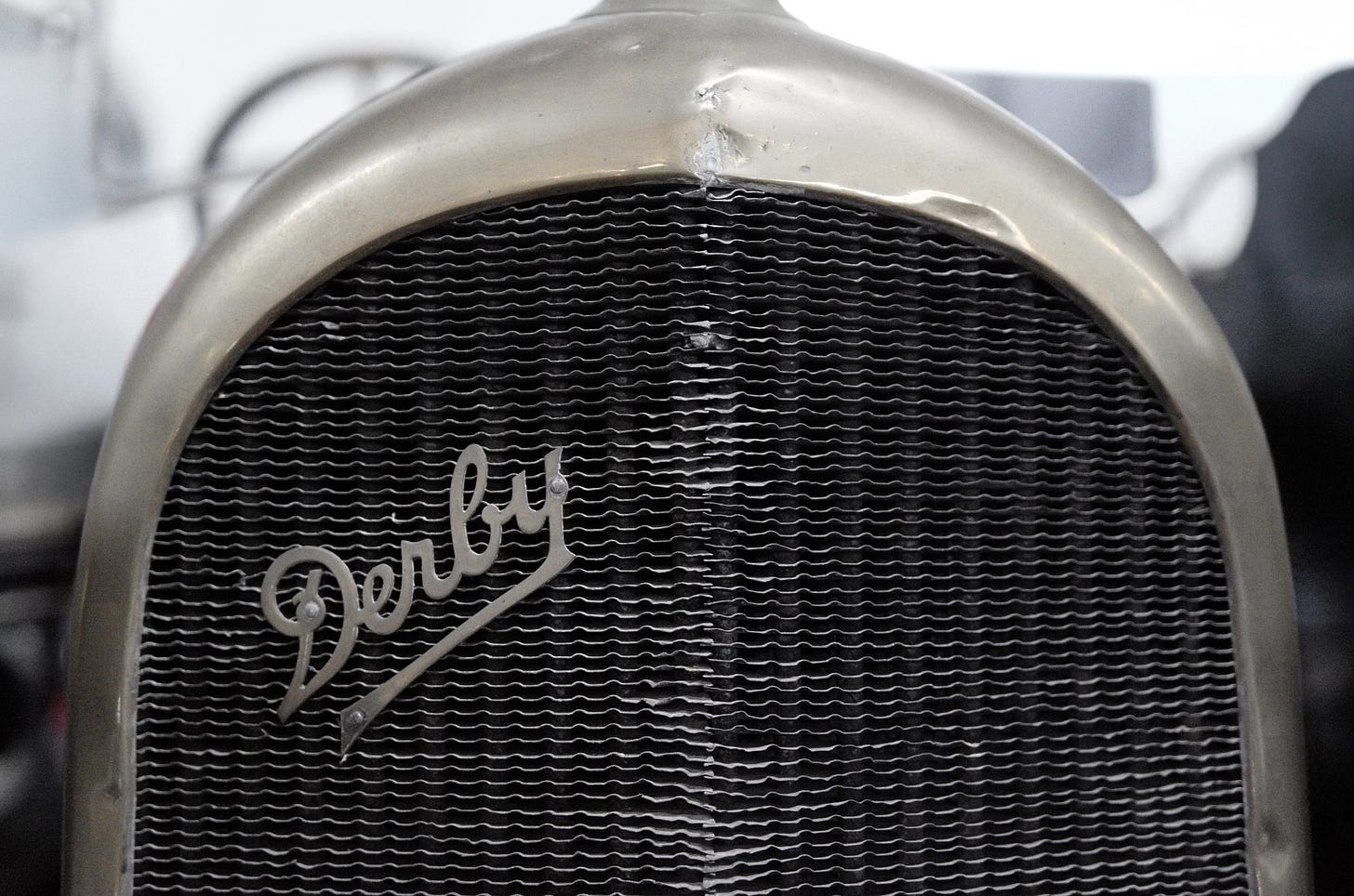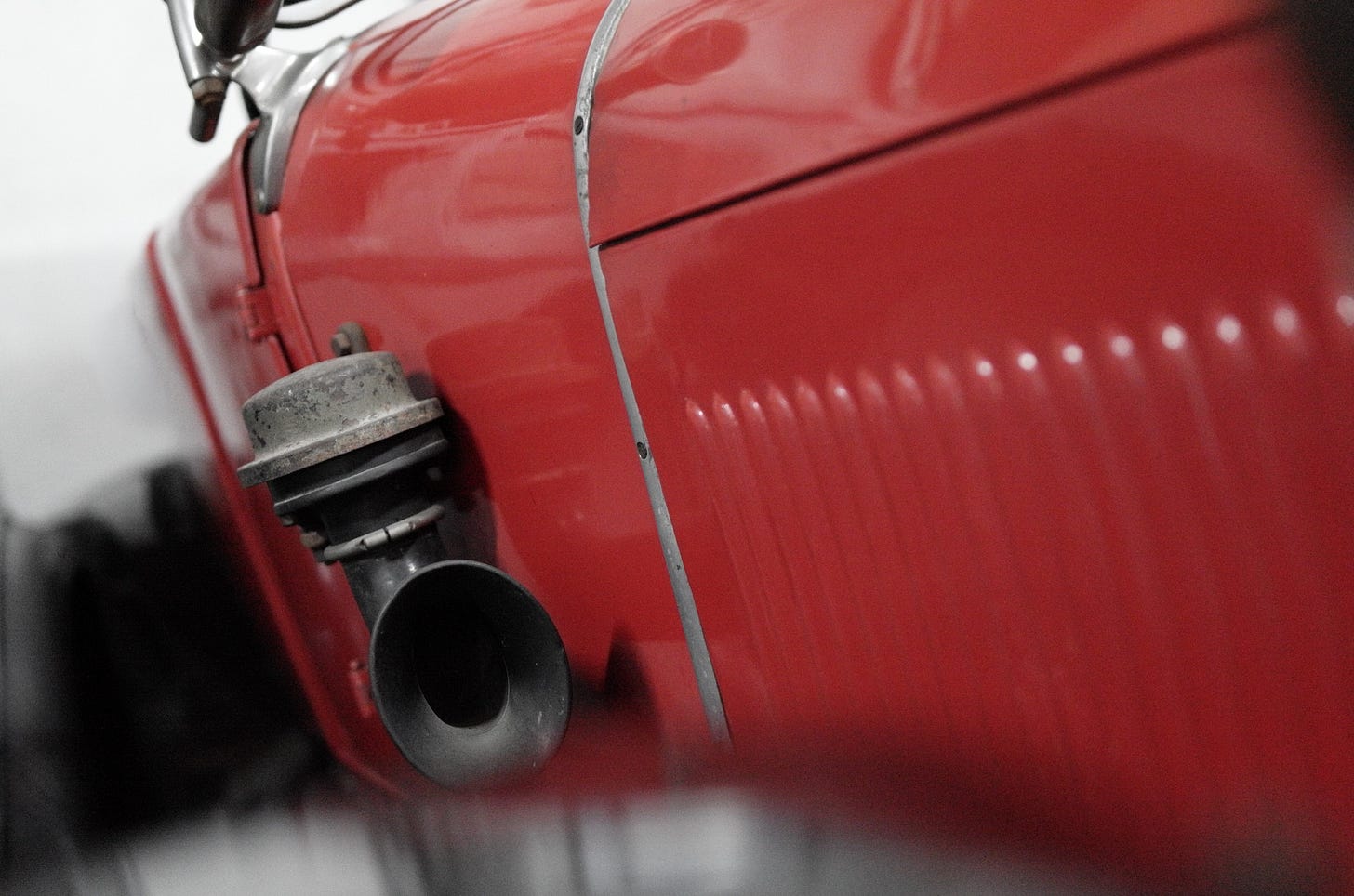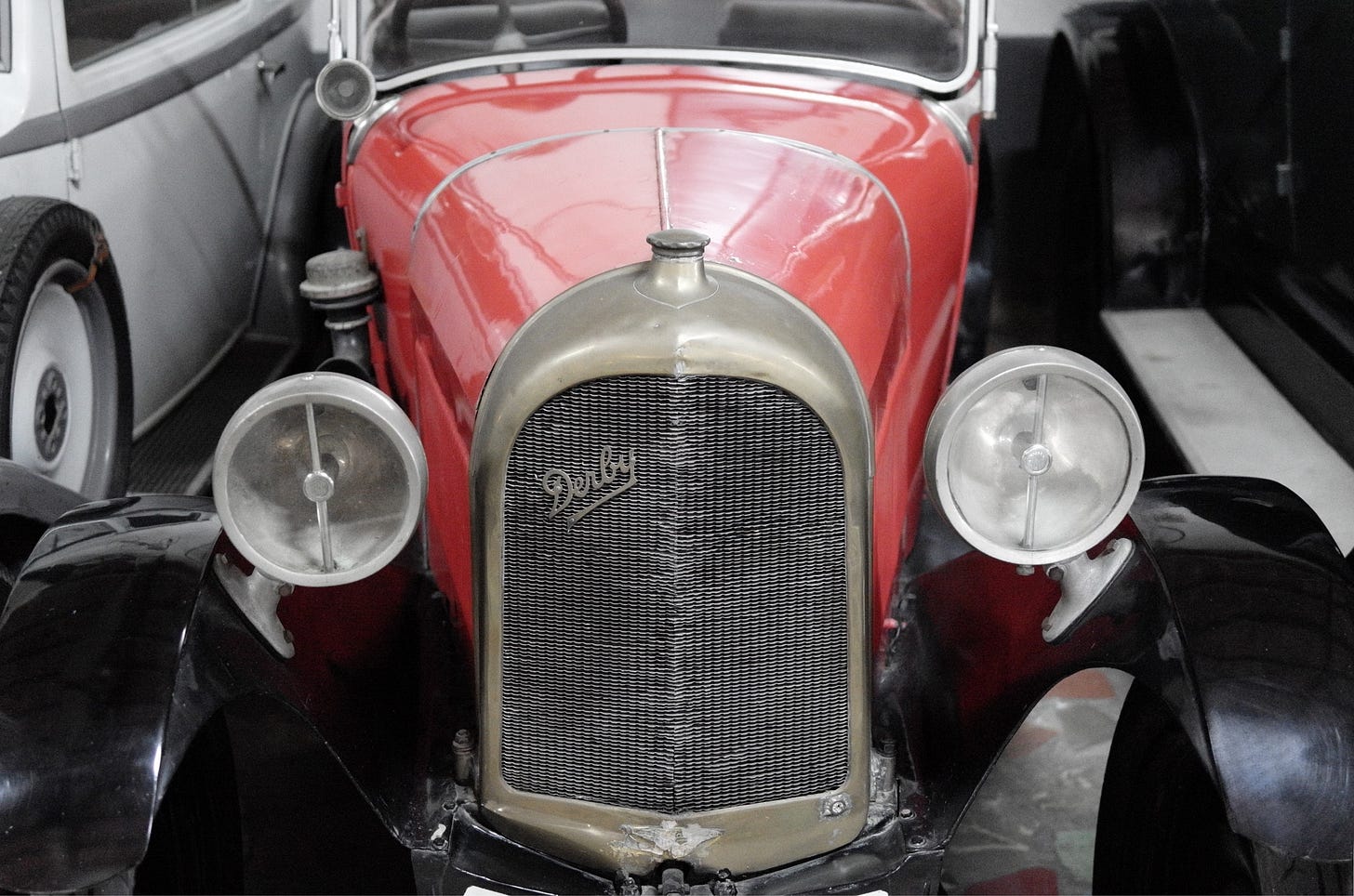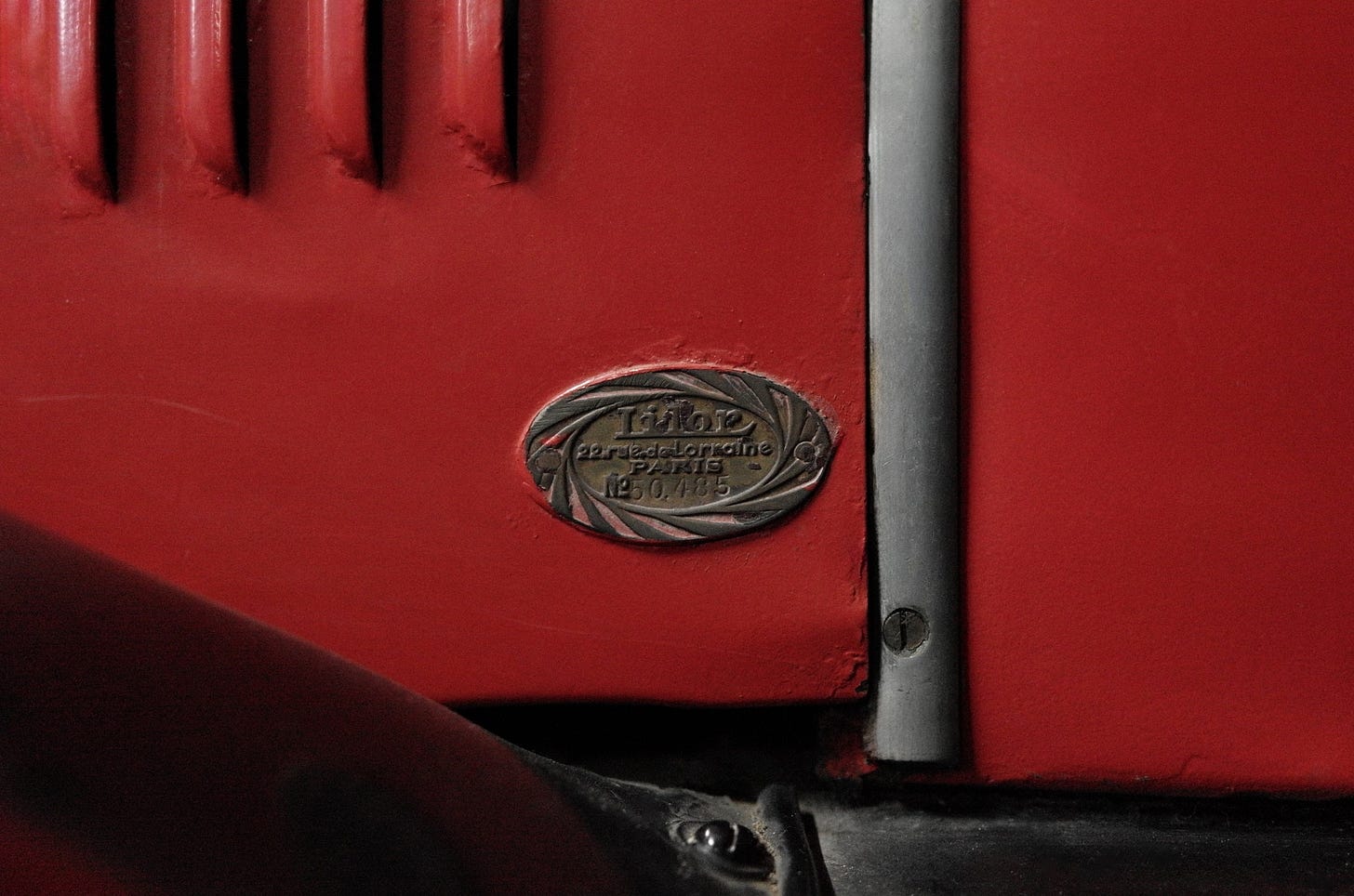Derby
Courbevoie, France.
Derby was founded in Courbevoie, France, in 1912 by Bertrand Montet.
The company originally produced cyclecars—very small, lightweight, low-tax vehicles popular before World War I.

After WWI, Derby resumed production and became known for well-built small cars rather than stripped-down cyclecars, advanced engineering for their class and elegant styling with their distinctive script radiator badge.
By the mid-1920s, Derby began using Ruby and Chapuis-Dornier engines, building a reputation for refinement and reliability.
Derby gained fame for endurance and rally success. Their lightweight cars performed well in French regional rallies, Voiturette racing categories and reliability trials.
Some later models even used supercharged engines. In the 1930s, Derby attempted to move upmarket.
Notable was the Derby V8 with an American Ford flathead V8 paired to a French-built chassis—quite advanced and powerful for its class. These were beautiful but expensive, and production stayed low.
Despite technical excellence, the Great Depression severely hurt Derby—like many niche marques. Production sharply declined after 1933, and by 1936 the firm ceased operations.
Today Derby is considered one of the noteworthy but often overlooked French small-car manufacturers of the interwar era.
The 1922 Derby CD.
This voiturette produced around 1922 (currently at Col·lecció d’Automòbils Salvador Claret in Sils, Girona) was known for being a lightweight, sporty cyclecar, and the CD series represents the company’s early-1920s shift toward more refined and reliable small cars—still compact and light, but no longer as spartan as pre-war cyclecars.

Key Characteristics of the 1922 Derby CD - with Chapuis Dornier engine.
While specifications vary slightly depending on year and coachwork, a typical Derby CD of this era includes:
Engine:
A small-displacement 4-cylinder engine (often 1085cc or similar), side-valve, known for smoothness and reliability. Earlier Derbys used 2-cylinder engines, but by 1922 Derby had moved firmly into 4-cylinder models.
Chassis & Construction.
Lightweight steel ladder chassis, Slim, semi-elliptic leaf springs, cable-operated brakes (typically rear only in early 1920s), and a pointed radiator with the distinctive script “Derby” emblem.
Derby cars were not high-power machines, but they were nimble. They competed in reliability trials and occasional sporting events due to their excellent power-to-weight ratios.
